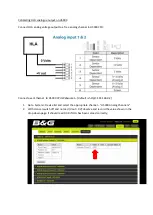
Operation & Installation Manual V12-V6 2010-05-31.doc
31/05/2010
5/60
1
General instructions.
1.1 Intended use.
The ALTOSONIC V12 is a gas flow meter designed for custody transfer applications.
Generally speaking, the meter operates within the relevant accuracy limits for all kinds of
gases, although there may be some exceptions.
A major field of application is measuring natural gas, the meter is suitable to operate at least
under the following conditions:
* relative density from 0.55 and upwards
* methane concentrations 75…100%
* presence of higher hydrocarbons, nitrogen, carbon dioxide, hydrogen, noble gases
* small amounts of other components, e.g. sulphur components, condensates, traces of oil
mixed with mill-scale, dirt or sand
NOTE!:
The presence of some components in the gas can influence the performance of the meter. In
particular, due to its acoustic absorption properties, high levels of CO2 may influence and
even inhibit the operation of an UFM. It is recommended to submit a specification of the
medium to be measured at the manufacturer for advice.
NOTE!
If possible, avoid the installation of an ultrasonic gas flow meter in close vicinity to a pressure
regulating valve. Especially when operating at a high pressure differential, a pressure
regulator may produce a high level of ultrasonic noise. In extreme cases this can be a
problem for the operation of the ultrasonic gas flow meter. In case of doubt consult the
manufacturer.
1.2 Certification and applicable standards.
INFORMATION!
The ALTOSONIC V12 custody transfer gas flow meter meets the technical requirements and
standards applicable to equipment designed for use in different countries world wide.
EU (European Union):
•
Pressure Equipment Directive 97/23/EC
•
EMC Directive 2004/108/EC (former 89/336/EC and 93/68/EC), according to:
EN 50081-2
EN 61000-6 (part 1, 2 and 3)
EN 61326-1 (1997) and A1 (1998), A2 (2001)
•
Low-Voltage Directives 2006/95/EC (former 73/23/EEC and 93/68/EEC) according to:
EN 61010-1:2001
•
The ALTOSONIC V12 is certified for use in potentially explosive atmospheres
according to the ATEX directive 94/9/EC following standards as:
EN 60079-1 (Ex ‘d’)
EN 60079/ -7 (Ex ‘e’)
EN 60079-18 (Ex ‘ma’)






































